

Home
About Us
Allotments
Garden Equipment
Seed Suppliers
Manure Problems
Children's Pages
GLA Blog
Weather Blog
School Veg Patch
Useful Links
Bullfinch
Bullfinches seem to be making a bit of a come back having been moved from the red list to the amber list.
Maybe this could explain why a pair of bullfinches have recently started to visit our plot and our garden. After initially being delighted to see them as they have the reputation of being a very shy and secretive bird, we started to be concerned that they could cause a problem.
Bullfinches have a reputation for stripping fruit trees, as well as some shrubs, of their flower buds. Although most of our fruit is grown on the plot we do have some fruit growing in the garden so would our bullfinch visitors rob us of any chance of fruit?
I have read that bullfinches tend to eat buds as a second choice food preferring berries and seeds, especially tree seeds, so we are hoping that if we keep the bird tables, (where so far they bullfinches have been content to feed), well supplied that our fruit buds will be safe at least in the garden!
The bullfinches’ strong, chunky beak is well adapted for breaking into tough tree seeds. If we do find the birds moving in the direction of our fruit blossom then we will just have to resort to netting – the trees not the birds.
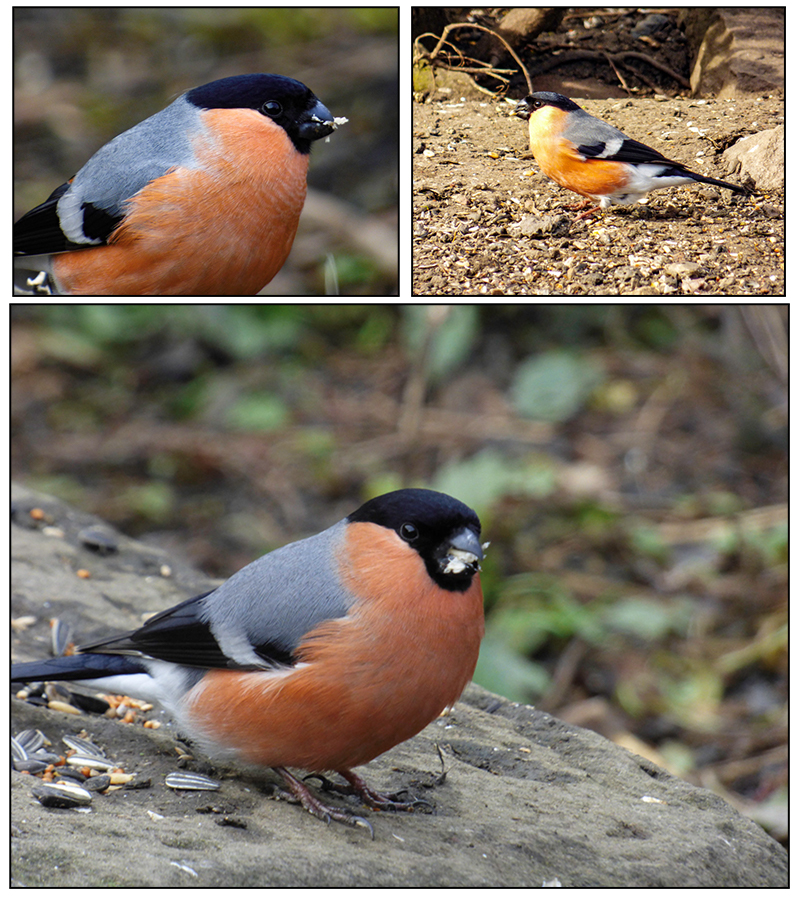
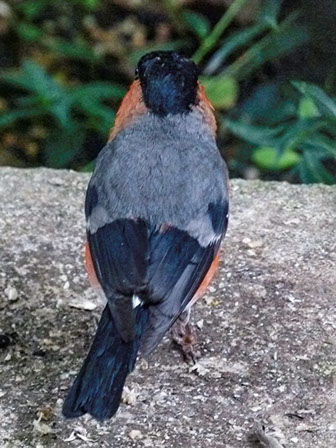
The male bullfinch is very colourful, having a bright reddish-pink front only broken by a black head and face. His back is grey leading down into a white rump and a black slightly forked tail. His black wings have white bars.
The female has similar markings to the male but they are less clearly defined and she lacks the vibrant reddish pink colouring. Her front is a more subdued dusky pink and her back is a fawn colour.
The young bullfinch has similar colouring to the female but the black cap is missing.
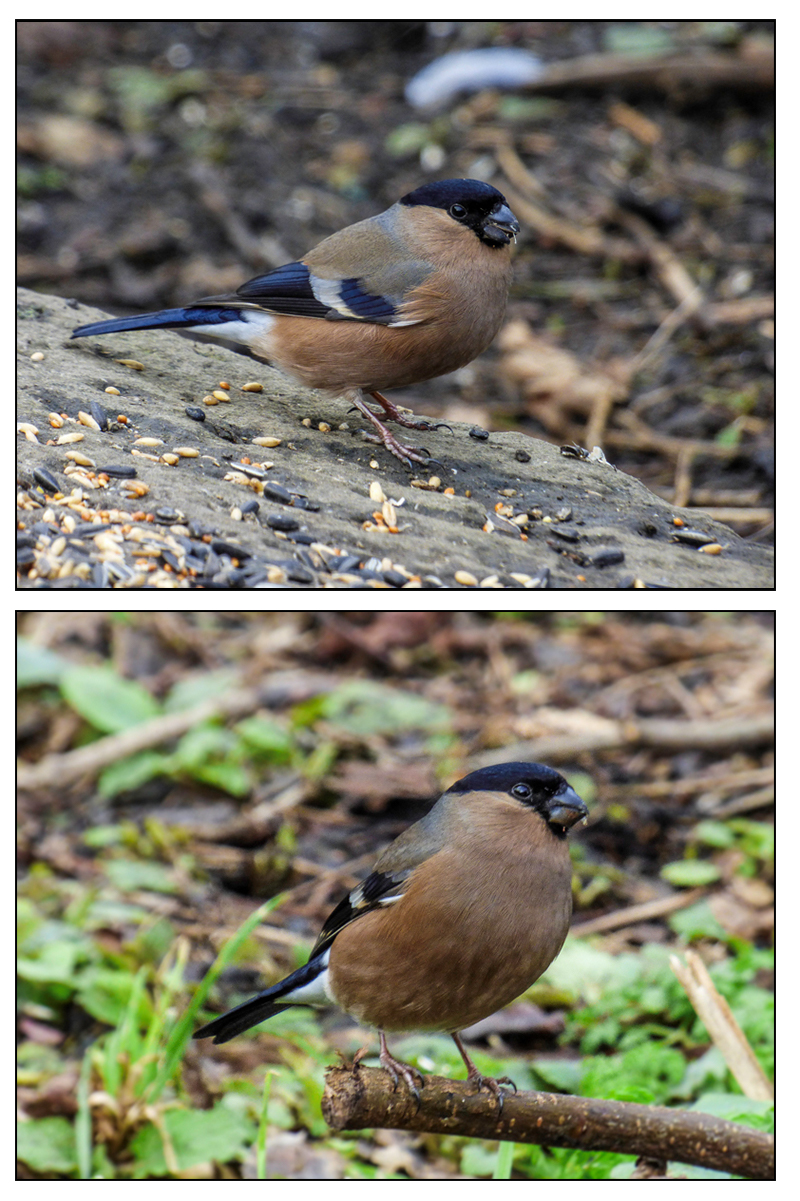
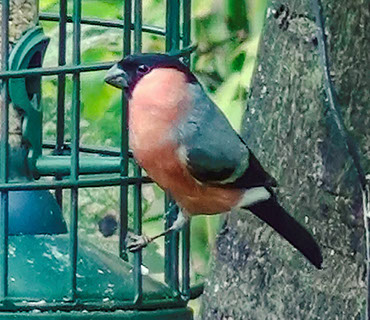
When viewed in profile bullfinches have a flatter crown than other finches which give them a sort of bull-necked look which probably explains their name.
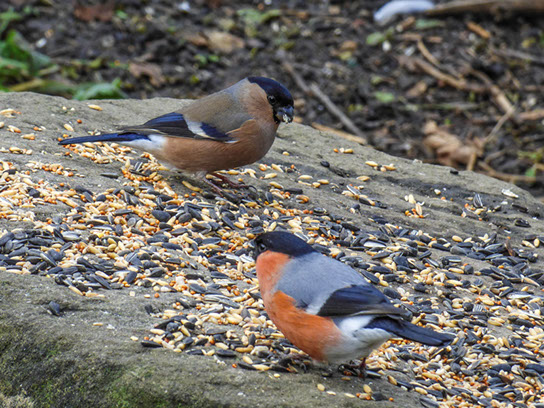
As is the case in our garden bullfinches usually are seen feeding in a pair which will stay together throughout the year.
The male courts the female by carrying out a complex display rather than by singing.
Click in the sound icon to visit a web page where you can listen to a bullfinch's call.
They usually confine themselves to two broods each year. The nest is built by the female in shrubs and bushes, especially prickly hedges such as hawthorn or bramble. She loosely combines twigs, lichen, moss, hair and thin roots into a fairly flimsy construction. She is also solely responsible for incubating the between 4 and 6 eggs with the male bringing her food. The eggs are light blue with darker speckling at one end. Incubation may take up to a fortnight after which the male will join his mate in feeding the young.
In common with most of our garden birds bullfinches will take insects especially when feeding their young. Both birds develop a feeding pouch during the nesting season which is used to store food. As a result during the breeding season parent birds may look to have chubby cheeks.
All we can hope now is that any visiting bullfinches behave themselves and leave any fruit or shrub flower buds alone and continue to enjoy the food that we put out for them. Then we can continue to enjoy them.
Our Plot at Green Lane Allotments Blog | A Gardener's Weather Diary | School Vegetable Patch Website
© Our Plot on Green Lane Allotments - Please email me if you wish to use any of this site's content
